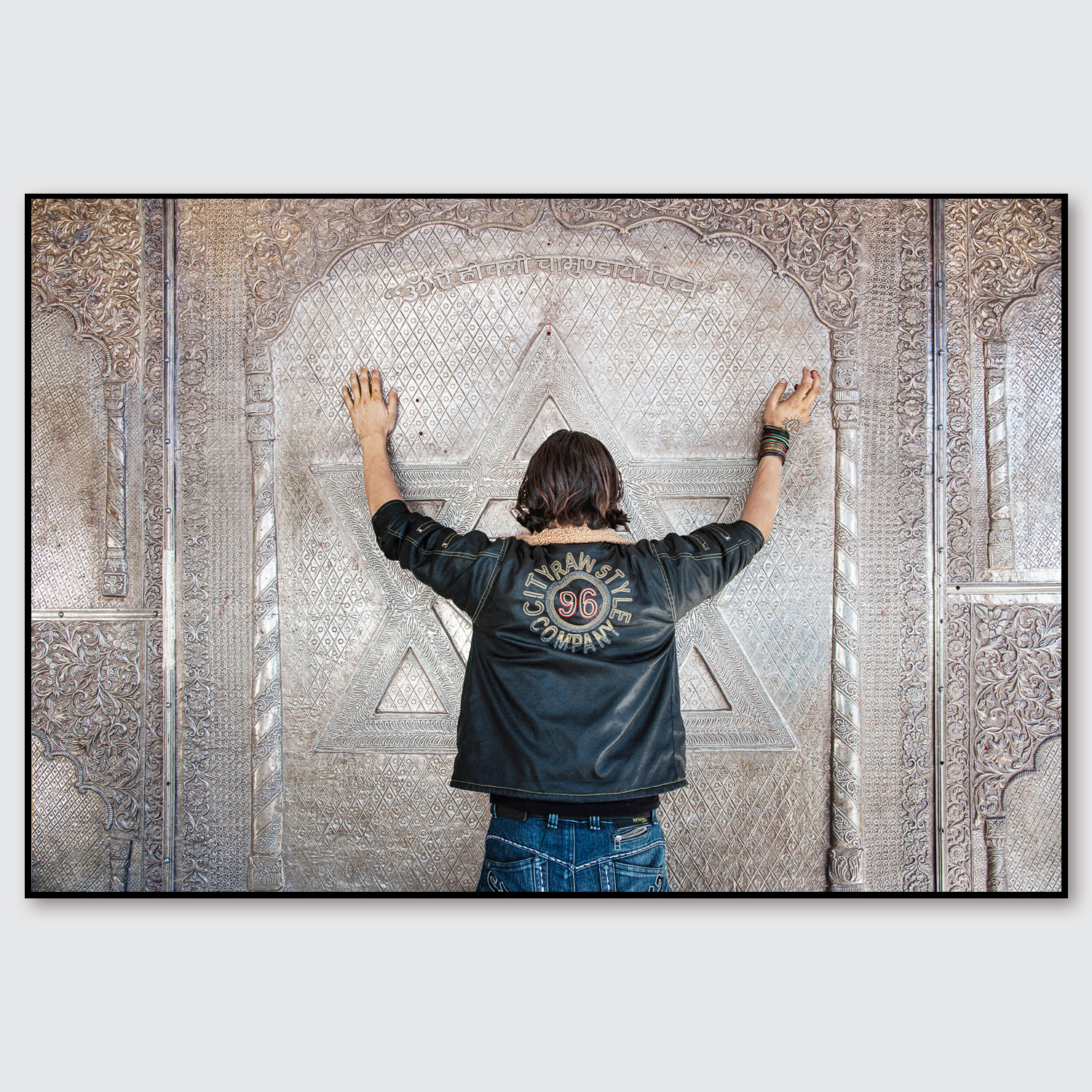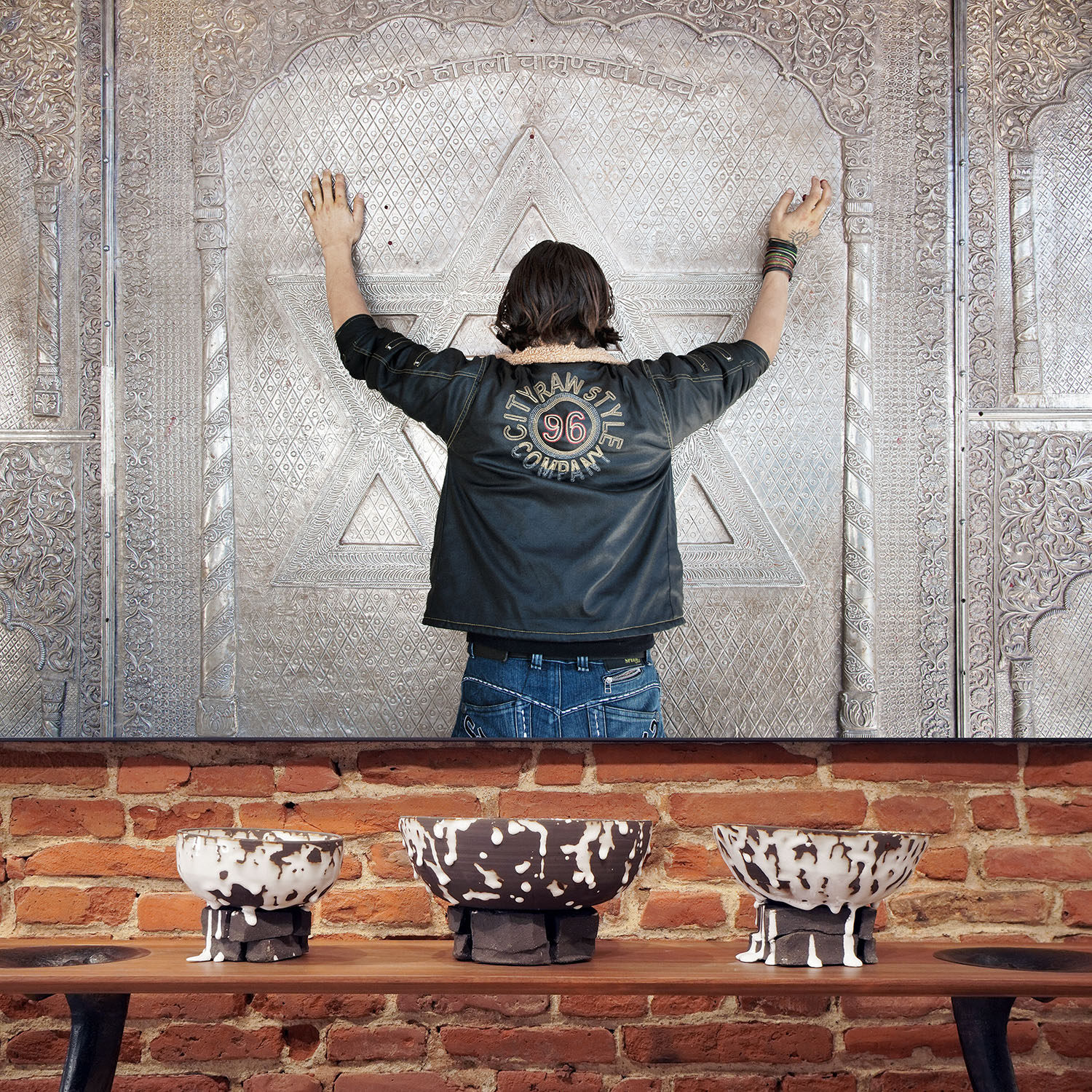Customizable
BUDDHIST TEMPLE, HIMALAYAS (10/21)
Référence :
Color photograph of a Buddhist temple in the Himalayas, taken by Ferrante Ferranti. The 6-pointed star is the combination of a lingam (masculine symbol) and a yoni (feminine symbol). The combination of these two elements symbolizes Ardhanarishvara (Sanskrit IAST: ardhanārīśvara; the “androgynous lord”) which in Hinduism is an epithet of Shiva represented in the androgynous form (ardhanaru): Shiva on the right side and Parvati on the left side of the same body. This symbolism, combined with the androgynous profile of the character, gives the photograph its full force.
Length : 1.18 in / 3 cm
Height : 36.61 in / 93 cm
Width : 55.12 in / 140 cm
Weigth : 2.2 lb / 1 kg
Artist : Ferrante Ferranti
Categories: Photographs, Living Models
Technique: Digital photography
Support: Pigment print on baryta paper (Canson Fine Art Baritta), laminated on Dibond
Dimensions: 140 x 93 cm
Number of copies: 21 signed and numbered prints
Year: 2011
Inspiration: The Ardhanarishwar Temple is dedicated to Lord Ardhanarishvara. An androgynous deity half male and half female, presenting Lord Shiva and Goddess Parvati symbolizing perfect balance. Ardhanarishvara, also known as Ardhanari and Shiva-Parvati, is a prominent figure in the Hindu pantheon. This singular deity symbolizes the harmony of masculine and feminine energies united in a single androgynous entity. In Sanskrit, “Ardha” means “half” while “Nari” means woman. Thus, Ardhanarishvara embodies the feminine aspect of the Deity. According to the Hindu sacred texts, Ardhanarishvara was born from the alliance between Shiva – the embodiment of the ultimate masculine – and his consort Parvati – the supreme representation of the divine feminine. This divine figure clearly illustrates the notion that each individual contains within himself both masculine and feminine attributes.
“At the age of 16, I had the revelation of the Wild Stones, an imaginary account by the architect Fernand Pouillon of the construction of the Cistercian Abbey of Thoronet, in Provence. Above all, the text conveys the mystical impulses of a master builder of the Middle Ages and the trials he encounters in taming the material. I thought I had found my calling: I would be an architect! The original edition was illustrated with a few black and white images by Lucien Hervé, who would later become Le Corbusier’s photographer. They echoed the book in the Zodiaque collection on Catalan Romanesque art owned by my parents, in which Jean Dieuzaide formed my gaze with his deep blacks and phosphorescent whites. During my studies in Toulouse, I discovered the heritage of the South-West, made up of sharp edges, granular stones, warm bricks, sensual ribs. The walls and cloisters were often the result of a palimpsest, the first layers of which date back to Roman times. Elsewhere, in Greece or Jerusalem, I was sensitive to the fractures of time and the stigmata of history. And seeking to translate its harmony or dissonances, I wrote with light, I became a photographer. The Liturgy of the Hours dictates the encounters of light with stone. Ephemeral, they call for meditation on the energies of visible realities that reveal the invisible. On the margins of these fleeting dialogues, the wild stones lacked life. I met her in the rites associated with the other Elements—water, fire, air—in sanctuaries inhabited by the Spirit. Ablutions and immersions, gestures of purification or prayer of the Hindu or Buddhist, Hebrew or Jain, Christian or Muslim faithful, embody matter, and help us to pass through the mirrors of appearances to access the Holy of Holies.”
Ferrante Ferranti

Ferrante Ferranti
FRANCE
Born January 13, 1960 in Algeria, of a Sardinian mother and a Sicilian father. He took his first photograph at the age of eighteen, a wave in Belle-Île-en-Mer. Passionate about Fernand Pouillon’s book, Les Pierres Sauvages, he began training as an architect in Toulouse, which he completed at Paris-UP6 in 1985 with a diploma in Theaters and scenography in the Baroque era. Traveling photographer, he has been involved for thirty years with Dominique Fernandez in a joint exploration of the Baroque and the different layers of civilizations, from Syria to Bolivia via Sicily and Saint Petersburg. His photographs dialogue with the texts of the writer, who defines him in the album Itinerrances (Actes Sud, 2013) as “the inventor of a language which links the sun to the ruins, in search of the meaning hidden in the forms” .




